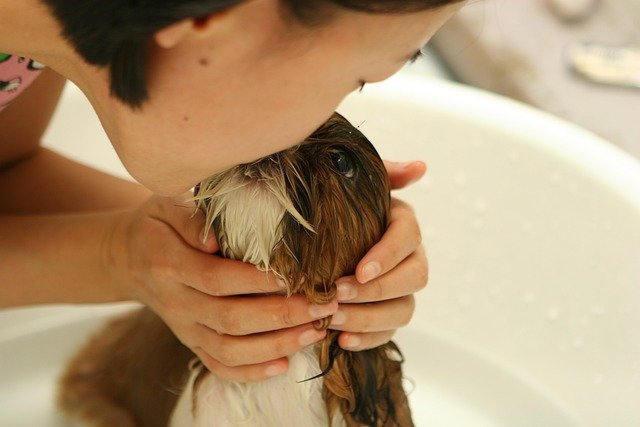Small Dog Rescue Shelter: Practical Guide to Care, Adoption, and Community Support
Small dog rescue shelters play a crucial role in giving vulnerable dogs a safe path from crisis to stability and, ultimately, into lifelong homes. This guide explains how shelters define their mission, assess incoming dogs, deliver daily care and enrichment, support ethical adoptions, and build strong community partnerships that sustain long-term success for dogs and people alike.

Small dog rescue shelters support dogs through some of the most stressful moments of their lives and help adopters make informed, humane choices. From the first health screening to the follow up after adoption, a thoughtful process keeps dogs safe and sets families up for success. The following practical guidance outlines core standards that can be adapted to shelters of different sizes and resources in your area.
Mission and shelter values
A clear mission and shared values guide every decision. Common pillars include animal welfare, safety, transparency, and equitable access to services. Values should be visible in volunteer handbooks, adoption counseling, and public communications. For small dog rescues, this can mean prioritizing humane handling, fear free care, age appropriate enrichment, and individualized plans for tiny breeds or seniors. Shelters can also commit to responsible intake, ethical placement, and lifetime support policies that welcome returns without judgment. Regular reporting on outcomes, such as live release rates and length of stay, helps build trust and a learning culture focused on continuous improvement rather than perfection.
Intake: health screening and behavior assessment
Effective intake begins with biosecurity. A brief quarantine area, cleanable surfaces, and clear traffic flow reduce disease spread. Initial veterinary checks typically cover vaccinations per local guidelines, parasite control, microchipping, and spay or neuter scheduling when feasible. Small dogs may arrive underweight, matted, or with dental disease, so triage prioritizes pain management and hydration. Behavior assessment should be observation driven and low stress. Staff can note body language, startle recovery, social interest, resource guarding signals, and tolerance for handling. Short, repeatable observations over several days are more reliable than a single test. The outcome is a practical care plan that lists handling notes, preferred rewards, safe walking equipment, and any training needs. Clear documentation ensures consistency across staff and fosters better matches later.
Daily care, socialization, and enrichment
Predictable routines lower stress. Small dogs thrive with frequent but short potty breaks, balanced nutrition suited to age and weight, and warm, draft free resting spaces. Daily health checks look for coughing, sneezing, appetite changes, lameness, and dental discomfort. Gentle grooming supports skin and coat health and builds positive associations with touch. Enrichment keeps minds active and prevents boredom related behaviors. Examples include food puzzles, snuffle mats, stuffed chew items, scent games, and quiet companionship in an office foster setting. Socialization should be thoughtful, not rushed. For shy or undersocialized dogs, start with parallel walks, gradual exposure to novel sounds, and consent based handling. Short training sessions that reward calm behavior and voluntary engagement help small dogs feel secure and develop skills they will use in a home.
Adoption process and successful rehoming
Adoption pathways work best when they are counseling based. A good process gathers lifestyle details about the household, including activity level, work schedules, children, other pets, and housing arrangements. Meet and greets should be structured and low pressure. Staff can demonstrate the dog’s calm behaviors, share handling notes, and observe interactions with resident pets on neutral ground when appropriate. Clear, plain language agreements outline care expectations, veterinary follow up, and support options. Success continues after the adoption day. Provide written transition plans with feeding schedules, potty routines, and decompression tips for the first two weeks. Offer check ins by phone or email, training resources, and access to local services such as vetted trainers or veterinary clinics. A fair returns policy, with no stigma, protects both the family and the dog if the match is not quite right.
Volunteers, fundraising, and community partnerships
Volunteers amplify capacity when roles are defined and training is consistent. Useful roles include kennel support, enrichment and walking teams, transport, photography and bios for adoptable dogs, foster coordination, and data entry. Foster caregivers are especially valuable for small dogs that need quiet recovery, weight gain, or social confidence. Fundraising should align with the mission and be transparent. Diversify efforts with monthly donors, grant applications, events, and digital campaigns that show real impact through stories and measurable outcomes. Partnerships extend resources. Collaborate with local veterinarians for timely care, trainers for behavior support, pet supply stores for donated goods, and schools or community groups for humane education. Clear memorandums of understanding, shared calendars, and impact reports keep partnerships healthy and focused on results.
Conclusion Small dog rescue shelters succeed when mission, intake, daily care, adoption practices, and community support work together in a consistent framework. Centering welfare, transparency, and humane handling improves outcomes for dogs and people across all stages of the journey. With steady routines, practical training, and robust partnerships, small dogs move from uncertainty to stability and into homes that understand their needs for the long term.




